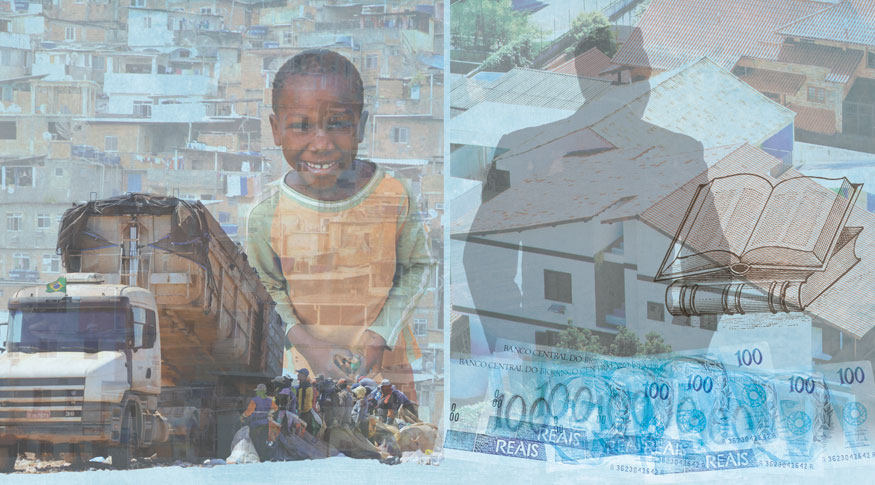Retratos Magazine
SDG 10: Inequality, a historic challenge
May 07, 2018 09h00 AM | Last Updated: June 05, 2018 11h02 AM
Facing inequality in Brazil requires, at first, a look at our History and at the processes that have led to the social and political exclusion of a big part of the population. The Millennium Development Goals (SDG 10) point to income distribution policies, adequate and non-discriminatory laws and wage protection. The IBGE researcher André Simões explains the role of public policies in the reduction of inequalities, having in mind economic development and the universalization of citizenship.

Retratos Magazine: How can we understand this SDG 10, about reducing inequality, in the Brazilian context?
André Simões: First of all, it’s important to know that inequality in Brazil is much more than a topic: it is a characteristic transcends virtually all our ways of life, our ways of looking at the country. There can be inequality of opportunities, of income, in the labor market, or even at a symbolic level, in the case of a feeling of not belonging in a place, of not feeling equal in the country here you are.
Retratos Magazine: How can we see inequalities through statistics?
André: In terms of income, indicators such as the Gini index, which measures inequality, are consolidated. The index for Brazil is significantly high in comparison with those for other countries such as Argentina, Uruguay and Chile and developed countries in general. Inequality is also seen in income allocation, when we compare that part of the population, the 10% earning the highest income, with the other 40% earning the lowest. Inequality in income allocation is huge in Brazil. That has an impact on public policies, on the vulnerability of specific populations. Education, income and labor market indicators show the vulnerable groups are formed by women, blacks and browns and youngsters; they face more inequalities in comparison with other groups.
Retratos Magazine: What is the importance of SDG 10 in this scenario?
André: So, SDG 10 comes to Brazil as an opportunity to monitor these indicators and evaluate, in comparison with other countries, what we need to do to reduce inequality levels. Focusing on the indicator without considering politics, is not enough. It is a more comprehensive view of this SDG and of its relevance, mainly in the case of Brazil. Regarding the SDG itself, since inequality is a very comprehensive topic present in different domains, it approaches inequality in different themes.
Retratos Magazine: What themes, for example?
André: A topic we have considered is income. Another important indicator is the participation of compensation from work in the Gross Domestic Product (GDP), and then you see how much of it is formed by compensation from work. You can see the evolution by looking at a time series: as you have bigger participation of work, an increase of payroll, so there is more allocation by the population. If a big part of a country’s GDP is allocated by capital or by those who live on profit and dividends, you take it from work and compensation and from whatever might give the population conditions to produce and maintain her standard of living. Together, these indicators show a profile of inequality in the country.
Retratos Magazine: When we talk about the way inequality is dealt with by our public policies, there is usually some controversy, once Society does not always welcome the idea of treating differently persons that are equal, at least in theory.
André: We are equal, in theory. We should be, but we are not, in fact. Policies are aimed at the promotion of inequality. There is that talk about not doing creating policies to benefit more vulnerable groups, because “we are all equal”. Something should have been done before to guarantee that everyone be at the same starting point, if we can put it that way. But we have a huge gap that should be covered. And how can we do that? By creating policies aimed at these realities. In the ideal world we are equal and have the same opportunities. In the real world, however, that does not happen; we depart from different positions and even when policies better the access to opportunities, there will still be symbolic and cultural. In a country like ours, not having policies is not knowing our history, where we come from, the history of slave, and it is not in accordance with our need to have a developed country, a nation.


















